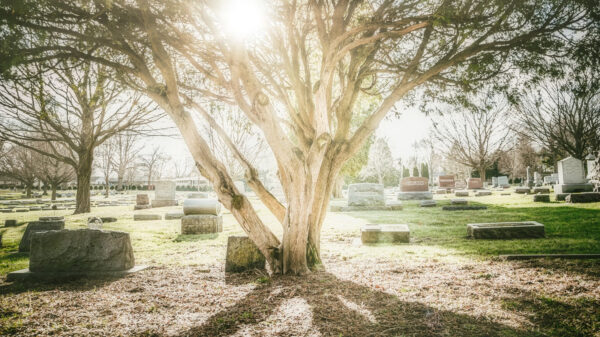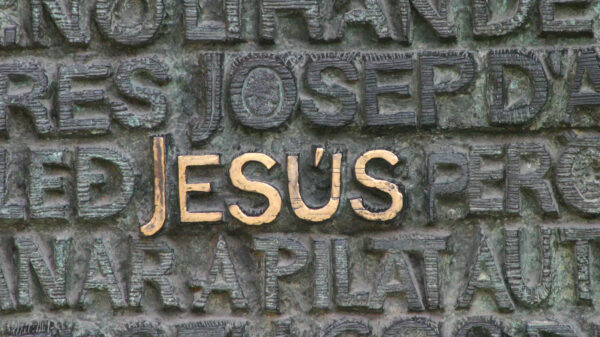
It’s Robust
Students want to be respected, and this respect begins with challenging content. Young people are capable of far more than the Church typically thinks to offer. If you’re still throwing candy, serving pizza or playing games with your students, you’ve probably set the bar too low. I always teach students at one level above their presumed capacity. If I’m teaching junior-highers, I think of them as high-schoolers. If I’m teaching high-schoolers, I treat them like they are already in college. Students know when you’re trying to “dumb down” the material. Respect their capacity and raise the bar.
It’s Interactive
The challenge for those of us who want to tackle difficult subject matter is to shape this content in a compelling way. If you’re used to speaking for 45 minutes while an audience watches quietly, you need to rethink your approach. When I was young, I watched movies and television shows passively; my kids, however, engage online video content interactively. I design my presentations with opportunities for the audience to respond and interact. When I was a youth pastor, I even designed the presentations with a “fork in the road”, a location in the message where the students got to choose the direction the talk would take. Years later, when I planted a house church, I learned to facilitate discussions rather than deliver messages. This is still my favorite way to teach.
It’s Relevant
Young people are distracted by a ton of media and content competing for their attention. Why should they take the time to listen to you? Why is your information important in the first place? I begin every talk by illustrating the important challenge facing my audience. I take the time to show them what’s broken before I help them find a way to fix it. What are the claims of the world and how do they threaten us? What are the challenges offered by your atheist friends and how can we respond? Messages become relevant when your audience is reminded of the battle that faces them.
It’s Personal
Authenticity is important to young people. They can sniff out insincerity in a heartbeat. If you want to have a deep impact on students, you better be willing to share your life with them as deeply as you can within the time constraints of your opportunity. Transparency is key. When I work with a youth group, I want them to know something about me and I want to learn as much as I can about them. I’ve been asked to teach them, but I really want to mentor them. In the end, I want my students to know my heart for them.
It’s Visual
Virtually every form of communication has been impacted by the visual nature of the Internet. Young people are far more likely to engage video content than any other form of information. When I began teaching students in 1998, PowerPoint was in its infancy. I relied on nine years of art school (I have a BA in Design and an MA in Architecture) to create presentations that were image and video centered rather than text or language centered. I became the weekly narrator of a visual drama. This approach continues to shape the way I make a case. When I eventually wrote my first book, I inserted line drawings inspired by illustrations I had been using for years with student groups.
Now take another look at these five principles. Do you think this same approach could be used with older folks? Of course it could. In fact, I never change my presentations to accommodate a particular age group. The difficult content I’m offering is challenging enough for older adults, but interactive, relevant, personal and visual enough to engage students. Students are really my target audience, but the approach I take will also work with older adults. That’s not always the case in reverse. That’s why I’ve been arguing recently that young people ought to be the group Christian Case Makers are trying to reach. If we focus on students and take the robust approach I am suggesting, older folks like me will be happy to come along for the ride.

J. Warner Wallace is a Dateline featured Cold-Case Detective, Senior Fellow at the Colson Center for Christian Worldview, Adj. Professor of Christian Apologetics at Talbot School of Theology, Biola University, author of Cold-Case Christianity, God’s Crime Scene, and Forensic Faith, and creator of the Case Makers Academy for kids.
Subscribe to J. Warner’s Daily Email
Save
Save
Save
J. Warner Wallace is a Dateline featured cold-case homicide detective, popular national speaker and best-selling author. He continues to consult on cold-case investigations while serving as a Senior Fellow at the Colson Center for Christian Worldview. He is also an Adj. Professor of Christian Apologetics at Talbot School of Theology, Biola University, and a faculty member at Summit Ministries. He holds a BA in Design (from CSULB), an MA in Architecture (from UCLA), and an MA in Theological Studies (from Gateway Seminary).

































Pingback: Are Young People Really Leaving Christianity? | Cold Case Christianity
Pingback: It’s Time for Youth Pastors to CH.A.T. With Their Students | Cold Case Christianity
Pingback: A Christian Case Making Strategy for Youth Ministry | Cold Case Christianity
Pingback: Christian Case Makers: Young People Ought to Be Our Jury | Cold Case Christianity
Pingback: Stop Teaching Young Christians About Their Faith | Cold Case Christianity
Pingback: Reaching Those Who Are Disinterested | Apologetics ForumApologetics Forum
Pingback: Yet Another Student Survey Confirming the Need for Case Making | Cold Case Christianity
Pingback: UPDATED: Are Young People Really Leaving Christianity? | TLG Christian News
Pingback: 10.03.16 | Student Community Bible Study Blog
Pingback: Christian Case Makers: Young People Ought to Be Our Jury | TLG Christian News
Pingback: Three Tips for Parents Raising the Next Generation of Case Makers | TLG Christian News
Pingback: What the Case Looks Like When Young People Are Your Jury | TLG Christian News
Pingback: mid-week apologetics booster (1-19-2017) – 1 Peter 4:12-16